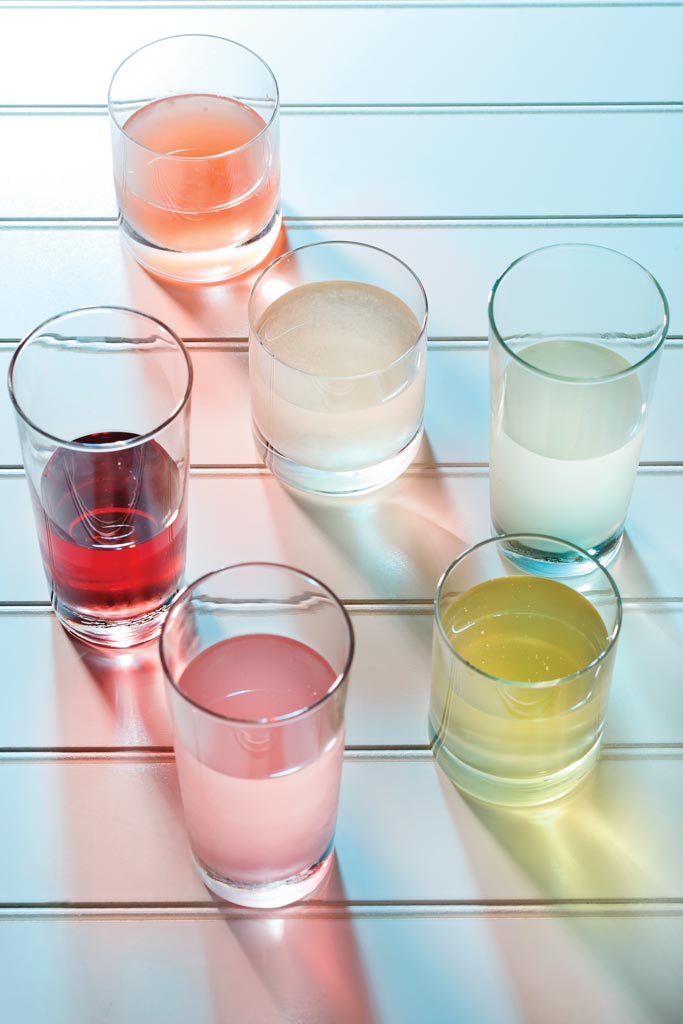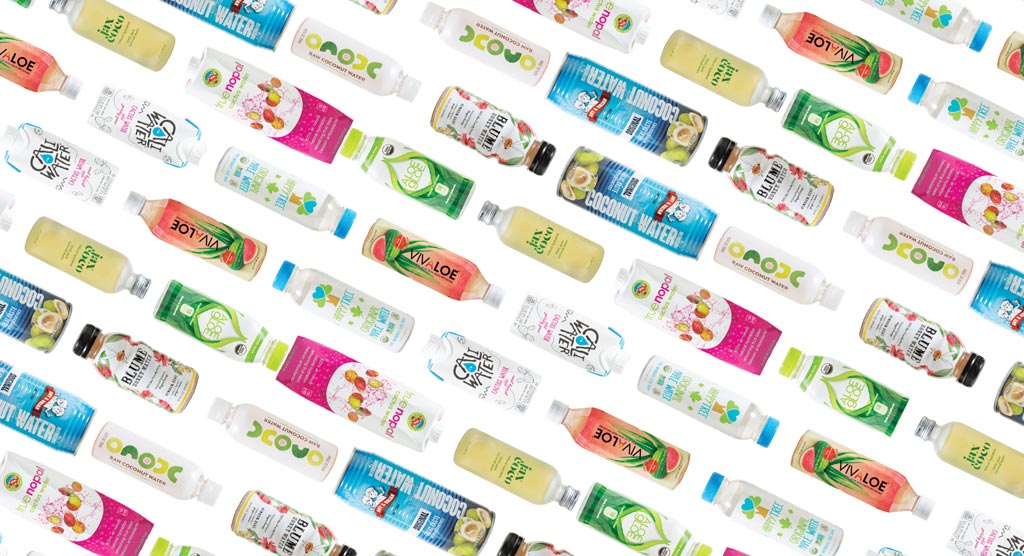From Aloe to Maple Water, We Investigate the Biggest Trends in H2O
Coconut water was just the first wave of natural waters to hit consumers. Today, walk into any grocery store and you’ll not only find a seemingly endless number of coconut water brands featuring flavors like “paradise punch,” and tags that include “natural,” “organic,” “no preservatives,” and “never from concentrate,” but you’ll also see an increasing number of other alternative waters, like aloe, maple, honey, and cactus. All competing for space in this rapidly growing market, the bottles are laden with cute packaging designs and claims of containing “less than half the calories and sugar as the leading coconut water,” or “more manganese than a serving of kale,” prompting us to ask: what gives? Are the health benefits real? Can water be extracted from every plant? How are these drinks actually made?
The major difference between these “alt waters” and regular H2O lies in their natural sugars and flavor, providing a nature-based source of the carbohydrate-electrolyte combination found in sports drinks. Though some health experts warn against the potential addictive, dopamine-releasing properties of sugar in general, whether natural or artificial, our bodies do need sugar for energy — probably just not as much as we may realize. No U.S. government organization has set a recommended daily intake of natural sugar, but in the United Kingdom, the government provides a daily maximum amount of total sugars (both natural and artificial) at 90 grams for adults. And while the Journal of the International Society of Sports Nutrition debunked claims that coconut water, either pure or from concentrate, hydrates “better” than artificially flavored carbohydrate-electrolyte drinks in a study published back in 2012, scientists determined that both were “capable of promoting rehydration and supporting subsequent exercise.” So, it could be said that drinks like coconut, aloe, cactus, and maple water hydrate more “naturally,” serving as a tasty, healthful alternative to sports drinks and other beverages like soda or artificially sweetened juices.
With Fortune reporting in 2015 that soda consumption has fallen to a 30-year low, the appeal of natural sugar versus added, artificial sugar gives major power to alternative waters on the shelves. Given increased consumer knowledge about aspartame (though it’s still deemed “safe” by the Food and Drug Administration) and the connection of consuming calorie-heavy, nutrient-free sodas to weight gain, obesity, type 2 diabetes, and heart disease, it’s the perfect time for natural waters to stage a take over. Big beverage companies have taken notice, altering their formulas to keep up. Gatorade is going a more natural route, debuting its new G Organic drink this year, which utilizes sugar from organically farmed sugar cane. And many alt-water brands even operate under the corporate umbrellas of Coca-Cola and PepsiCo, as the giants attempt to diversify their portfolio of products.
However, as we learned in our own research, investigating and tasting more than 20 of these products, not all alt waters are created equally. Some “natural premium coconut waters” were actually made from concentrate with unnamed “natural flavors,” and we saw colors ranging from opaque, milky white to green and pink. Understandably, a lot of confusion surrounds these products — how can something “natural” be from concentrate and how can water from one plant give birth to so much variety? And yes, medical experts can agree that aloe fights inflammation and cactus pear boasts anti-cancerous effects, but the benefits of drinking these beverages can risk over-exaggeration when such tags are used as a marketing ploy.
We found that the wide range of drinks vary in how the water is obtained and processed. Simply put, pure coconut water is defined as the clear fluid harvested from young, green coconuts. The mysterious pink color can result from its naturally occurring antioxidants, which some brands now highlight to show how unprocessed and “raw” their product is, through the use of high-pressure processing versus the more commonly used heat pasteurizing to kill bacteria. Other types of alt waters are also obtained from the plant, or they consist of a blend of plain water mixed with natural ingredients. Maple water, for example, is a slightly sweet-tasting water made directly from the sap of maple trees, while cactus water typically combines filtered water with a mixture of prickly pear cactus puree, extract, or concentrate. Aloe water, made from a mixture of water and aloe juice, pulp, or inner leaf powder, was most likely to contain added sugar, though we imagine it would be difficult to drink without it.

On a local level, Pittsburgh-based company Blume Honey Water (blumehoneywater.com), blends 100-percent bee-friendly honey with water and natural fruits and spices (which are clearly explained on the label) for “artisanal hydration” and “elegant energy.” To break it down, the natural sugar source works in the body by providing glucose for “immediate invigoration” and slow-absorbing fructose for “smooth, sustained energy.” “Olympians drank honey water in ancient Greece,” says co-founder Michele Meloy-Burchfield, who has more than 25 years of experience in the beverage industry. “We brought back this ancient elixir with a modern twist, to be playful on the palate. We are diligent in using natural, raw ingredients in our beautiful honey waters. We could have chosen to use citric or ascorbic acid as a preservative, but why would we want the word ‘acid’ on our bottle? So, instead, we use organic lemon juice.” Blume is on a mission to sample over 1,000 people each week, reporting that the response sip after sip has been overwhelmingly posisitive. Currently all three artisanal flavors: Giner Zest, Vanilla Citrus, and Wild Blueberry are available at specialty stores in Western Pa. Blume will soon expand to markets in Washington, D.C., Baltimore, Northern Virginia, Denver, and Los Angeles with hopes of launching in the top U.S. millennial markets in 2017. “The consumer is so much more sophisticated now,” she explains. “They’re more educated on health and nutrition, and demanding better alternatives directly related to their health and well-being, so they’re leaving carbonated sodas behind. It’s a $35 billon opportunity for healthier alternatives in the market.”
When it comes to filling up your shopping cart with these refreshing, tasty alt waters, we recommend scanning more than the hot marketing words of the moment listed on the bottle. Study the nutrition label carefully, and drink in more of what feels good.





